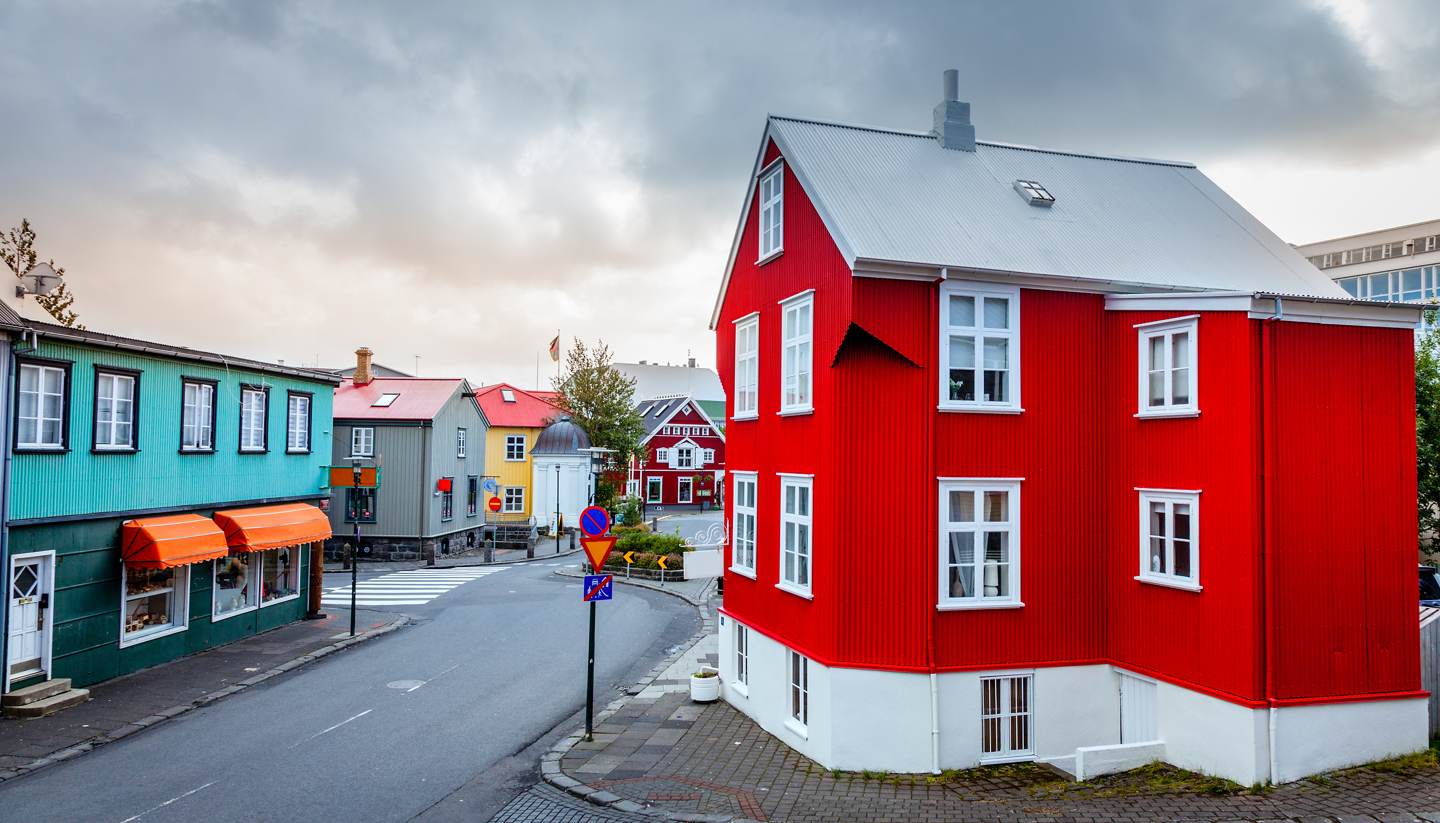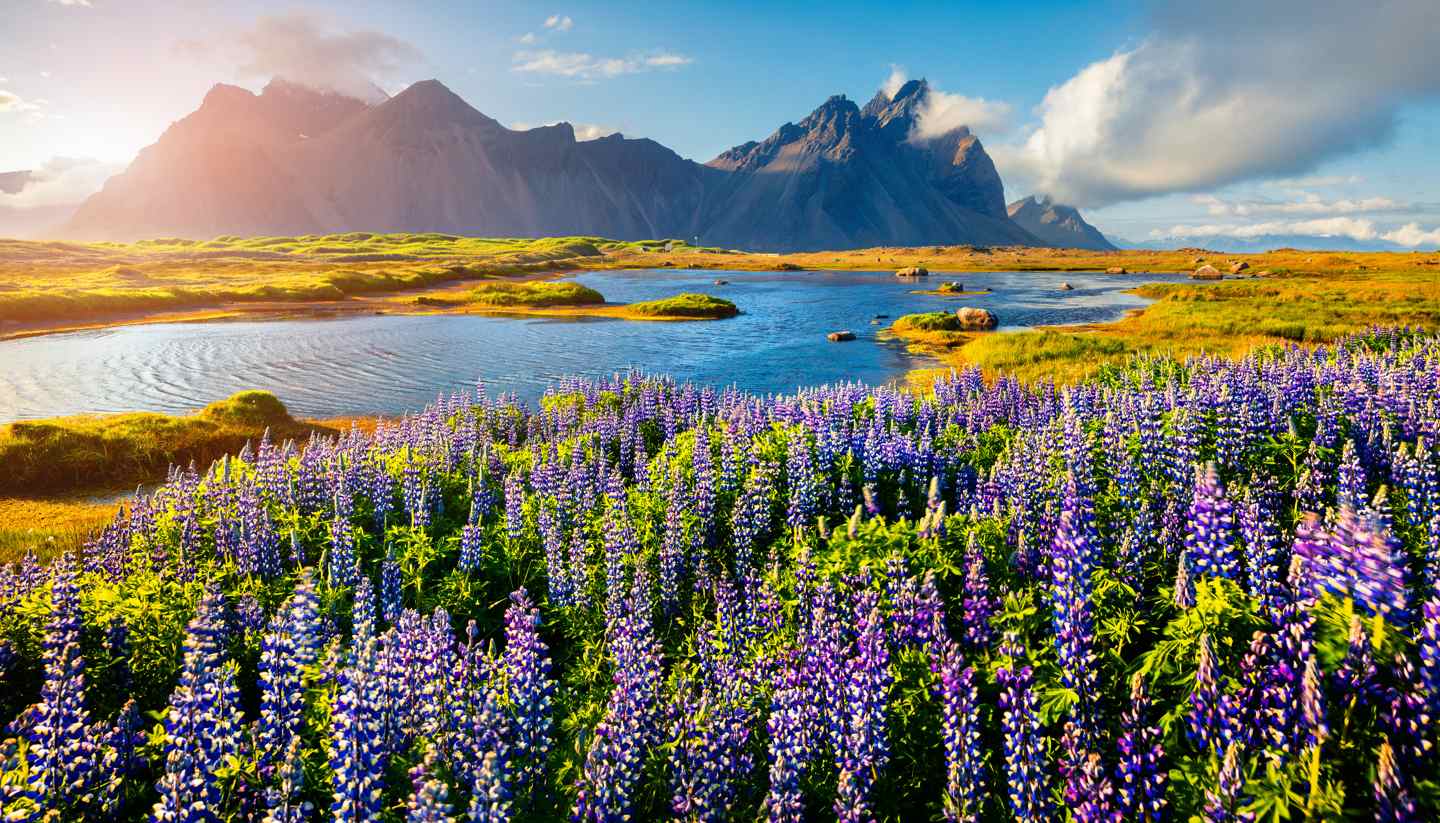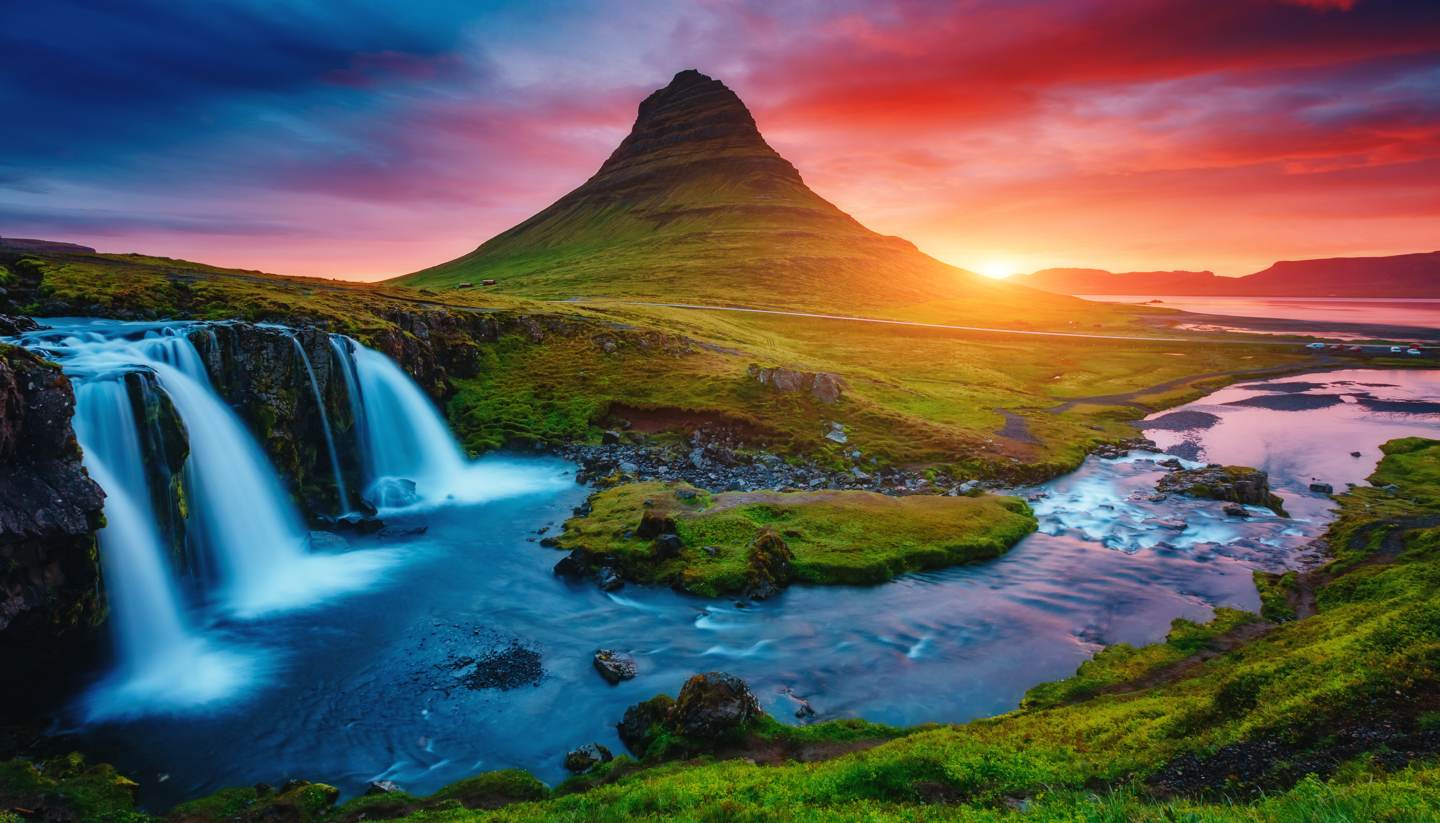Iceland Weather, climate and geography
Weather and climate
Best time to visit
Iceland has a changeable climate tempered by the cold winds from the North Pole and the warm air from the Gulf Stream. Apart from sudden changes in weather and temperature, visitors should also expect strong winds and cloudy skies.
Rain is common, especially along the south coast. In Reykjavík, the average precipitation is 840mm (33in) a year, but if you move further northeast to Akureyri, rainfall becomes less frequent, averaging about 500mm (20in) a year.
Spring (April to May) starts late but temperatures soon climb above the freezing point. In Reykjavík, the average temperature reaches 6°C (43°F) by May.
Summer (June to August) is lovely, with long days and mild temperatures. This is the best time to visit Iceland. In Reykjavík, the sky may be cloudy, but with temperatures hovering around 11°C (52°F) and plenty of events taking place, it is hard not to feel happy.
Autumn (September to October) starts off relatively warm but temperatures soon drop to an average of 4°C (39°F) by October.
Winter (November to March) is long, cold and dark. In Reykjavík, rainfall is frequent but you can also expect a small amount of snow between December and January, with temperatures averaging 0°C (32°F). If you travel north, naturally you can expect a colder climate. Snow is also abundant in the plateaus and mountains. Beware that you only get a few hours of daylight each day, especially in December.
Required clothing
As the weather in Iceland can be unpredictable, use layers to keep yourself cool or warm, regardless of which month you go to Iceland. In the winter, add gloves and thermals to your packing list.
Waterproof garments are also essential. Another must-bring item is swimwear – even in the winter, Icelanders visit heated pools or geothermal spas to relax.
Geography
Located near the Arctic Circle, Iceland covers some 103,000km² (39,769mi²) and is the second-largest island in Europe, after Great Britain.
Iceland sits on top of two tectonic plates – where the Eurasian and American tectonic plates meet. As the plates split apart gradually, new landmass is being formed and as a result, Iceland grows by about 5cm (2in) a year. The most significant of these seismic features can be seen at Þingvellir (Thingvellir) National Park, particularly along the Almannagjá gorge, which is essentially the space between the tectonic plates.
About 11% of the country is covered in glaciers and another 70% is uninhabited. In other words, the landscape of Iceland is wild, untamed but extremely beautiful, dotted with majestic waterfalls, snow-capped volcanoes, moss-covered lava fields and black sand beaches. The moon-like landscape also makes Iceland the ideal training ground for American astronauts. In fact, the Apollo 11 crew were trained in the areas around Húsavík, a small fishing village on Iceland's northern coast.





